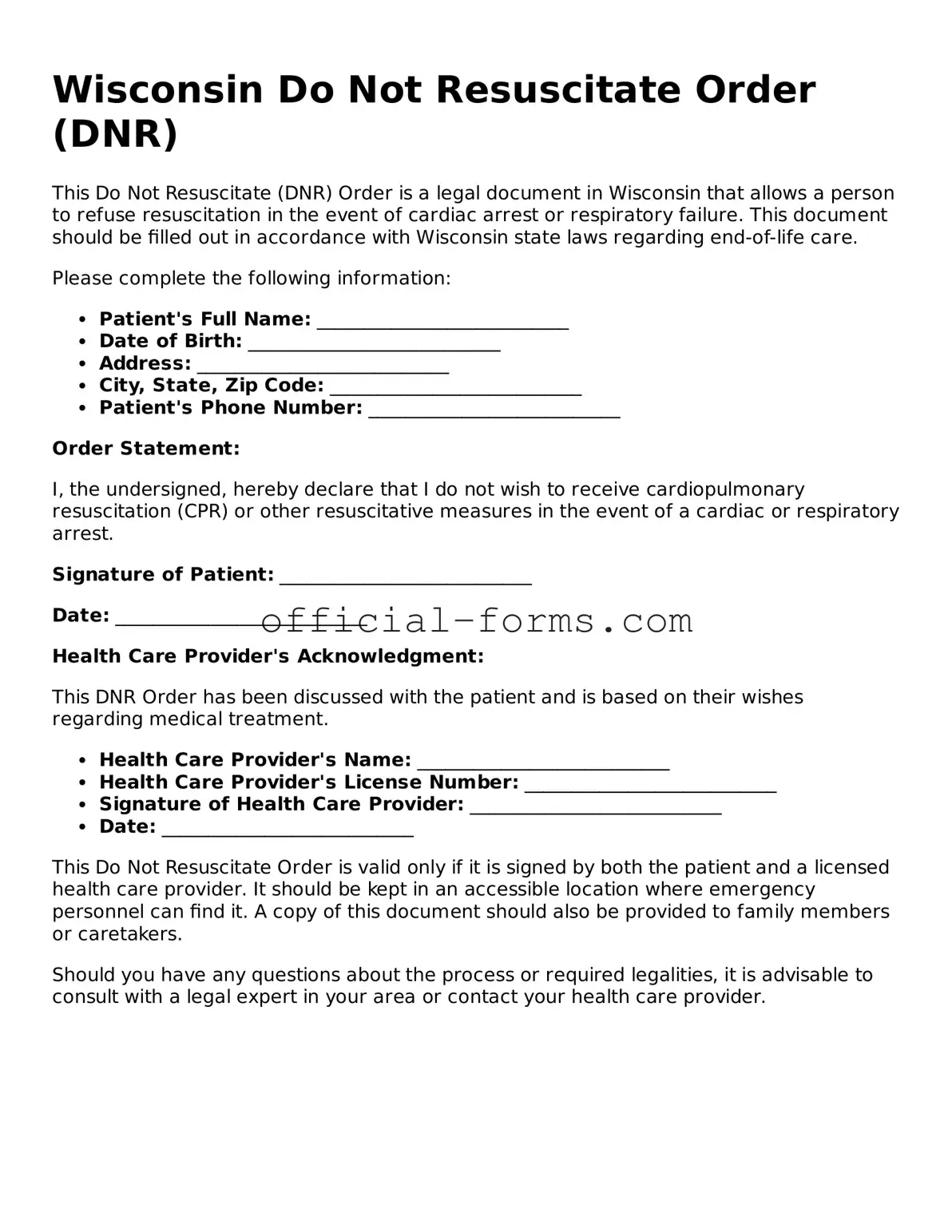In the realm of healthcare decisions, the Wisconsin Do Not Resuscitate (DNR) Order form serves as a critical tool for individuals wishing to express their preferences regarding life-sustaining treatments. This legally recognized document allows patients to indicate their desire not to receive cardiopulmonary resuscitation (CPR) in the event of a cardiac or respiratory arrest. Importantly, the form must be completed by a qualified healthcare provider and signed by the patient or their legal representative, ensuring that the wishes articulated are both informed and respected. The DNR Order is not a blanket refusal of medical care; rather, it specifically addresses the circumstances under which resuscitation efforts should be withheld. Patients may choose to discuss their decisions with family members and healthcare professionals, fostering a deeper understanding of the implications of such choices. Additionally, the DNR form is designed to be easily accessible, with clear instructions for both patients and medical personnel, thus promoting effective communication in critical situations. Understanding the nuances of this form can empower individuals to take control of their healthcare decisions, ensuring that their values and wishes are honored at the end of life.
